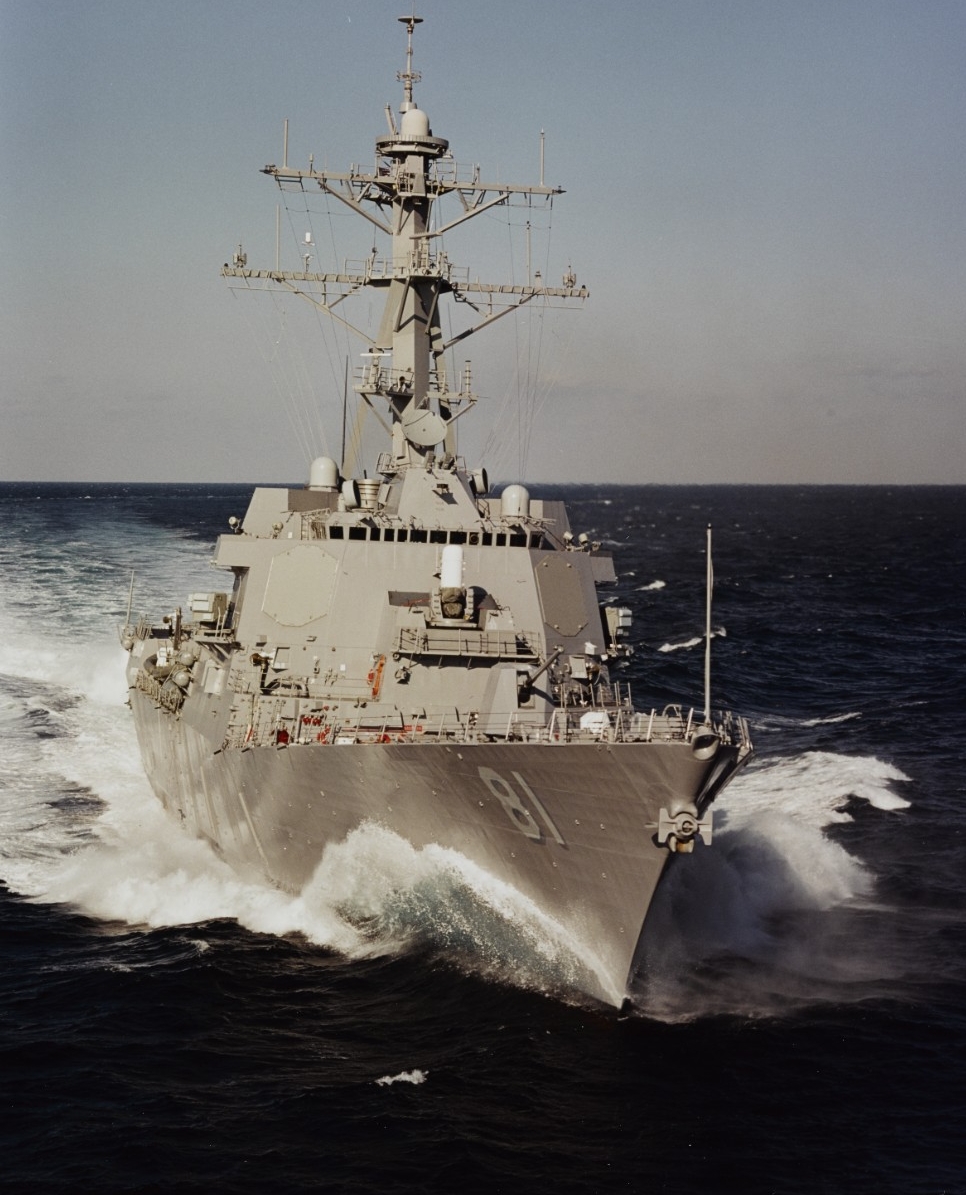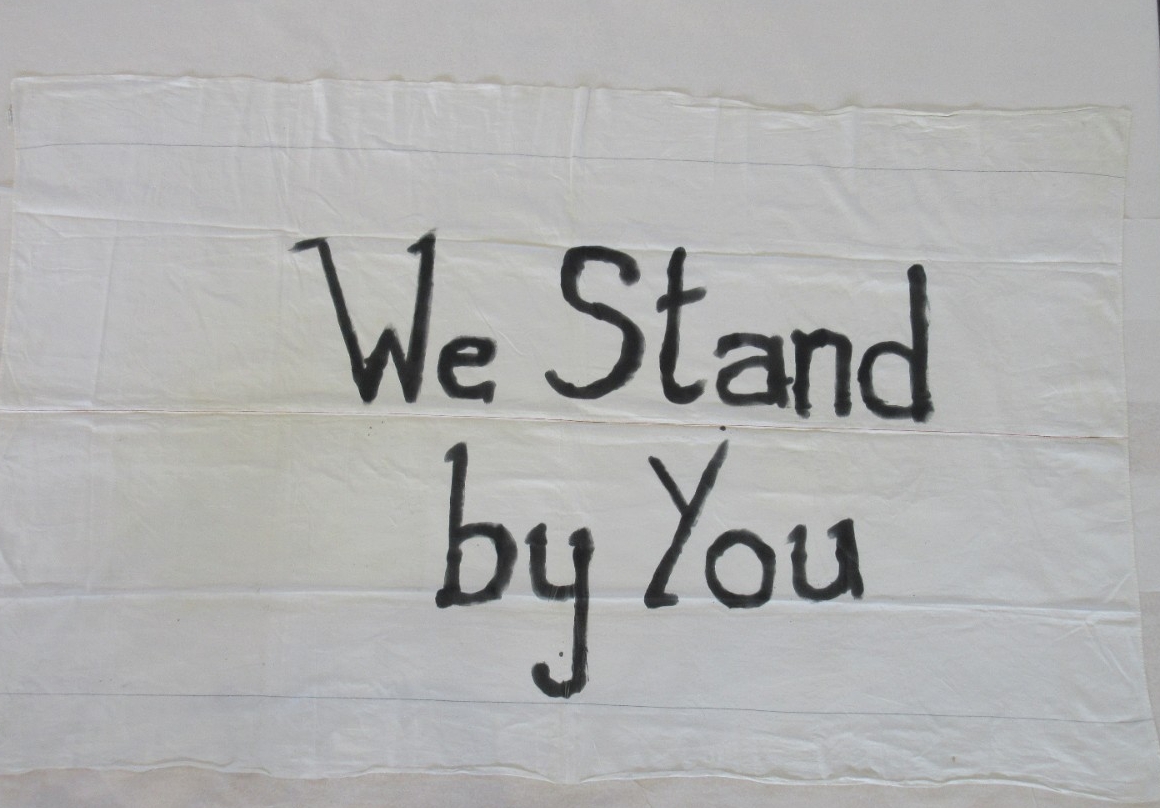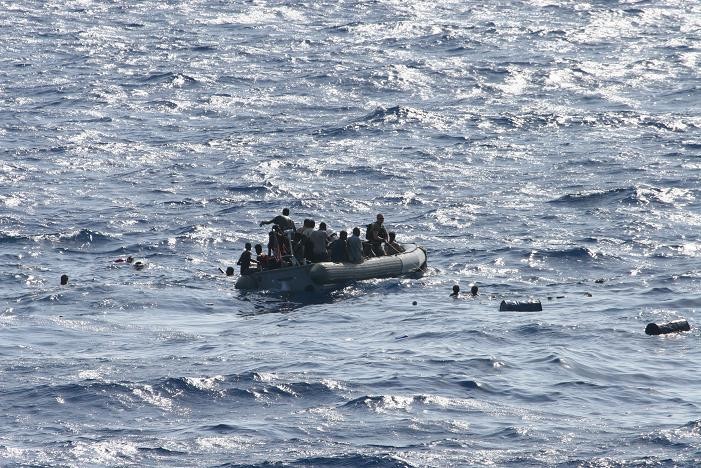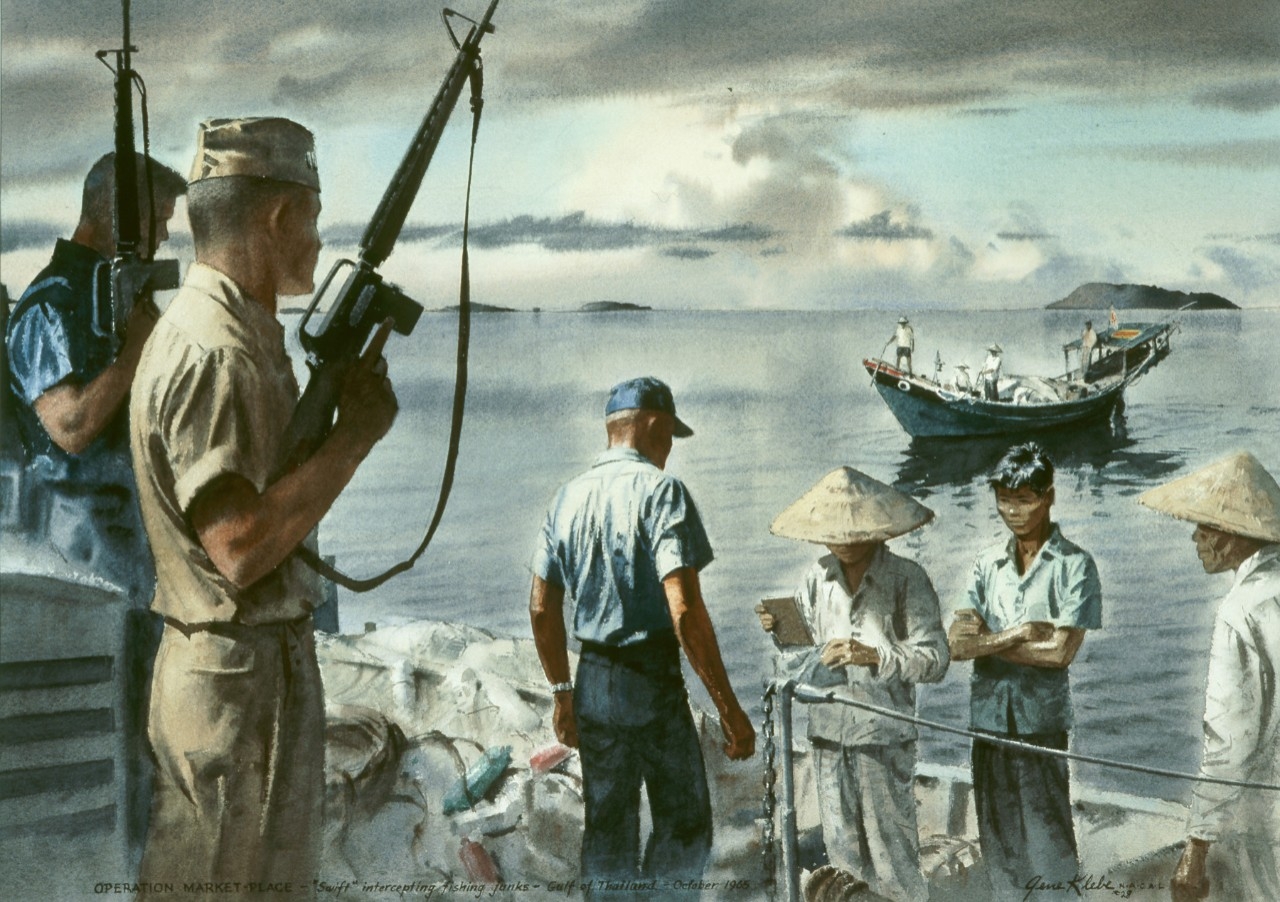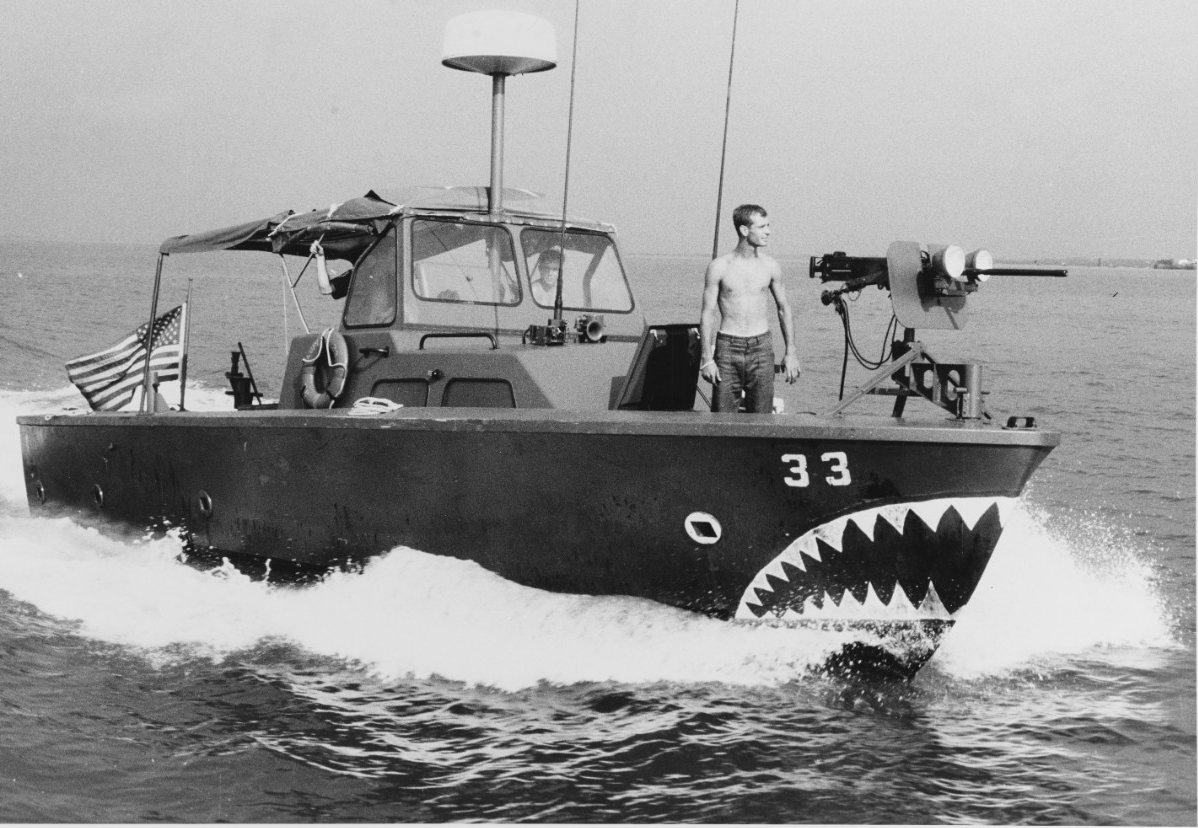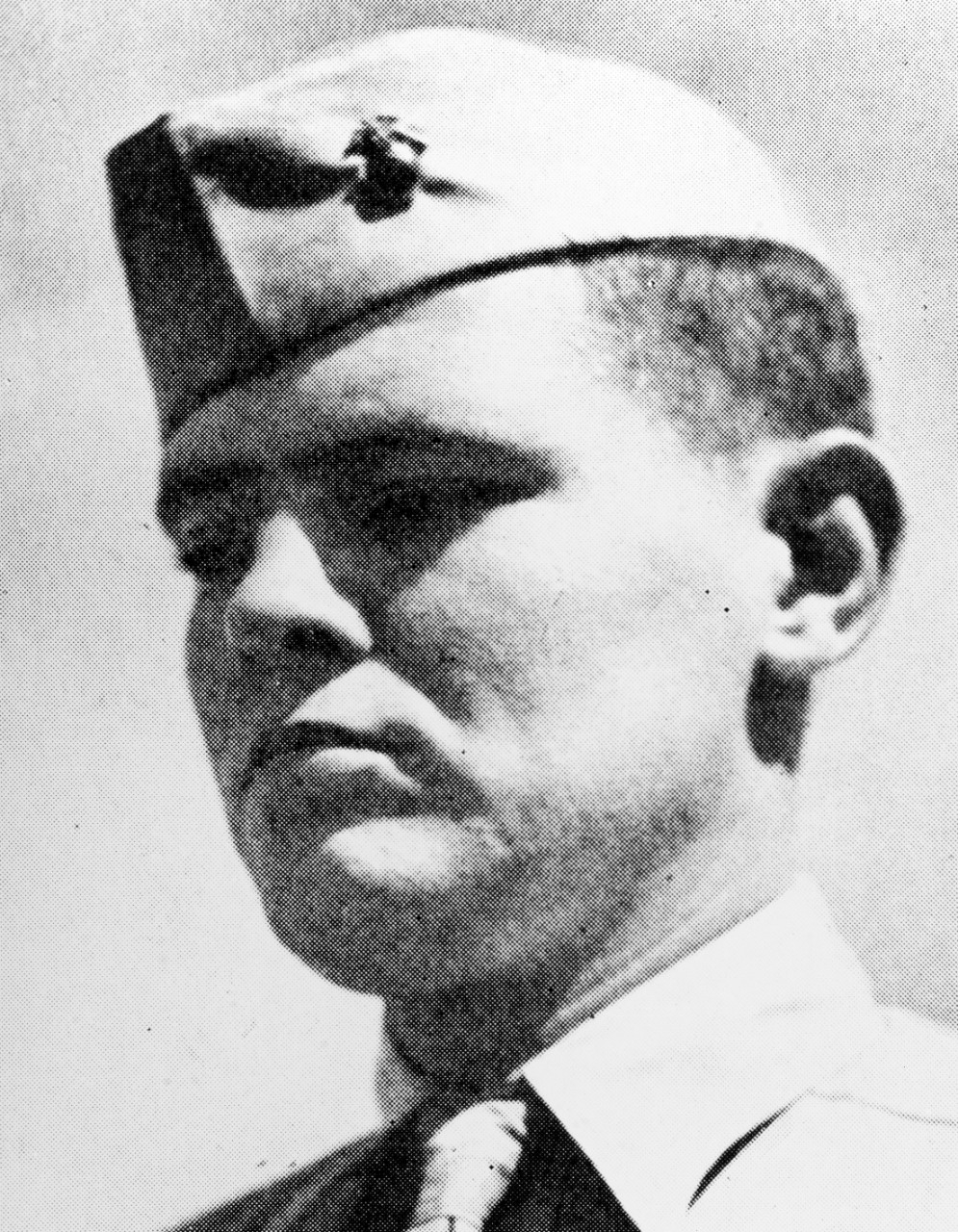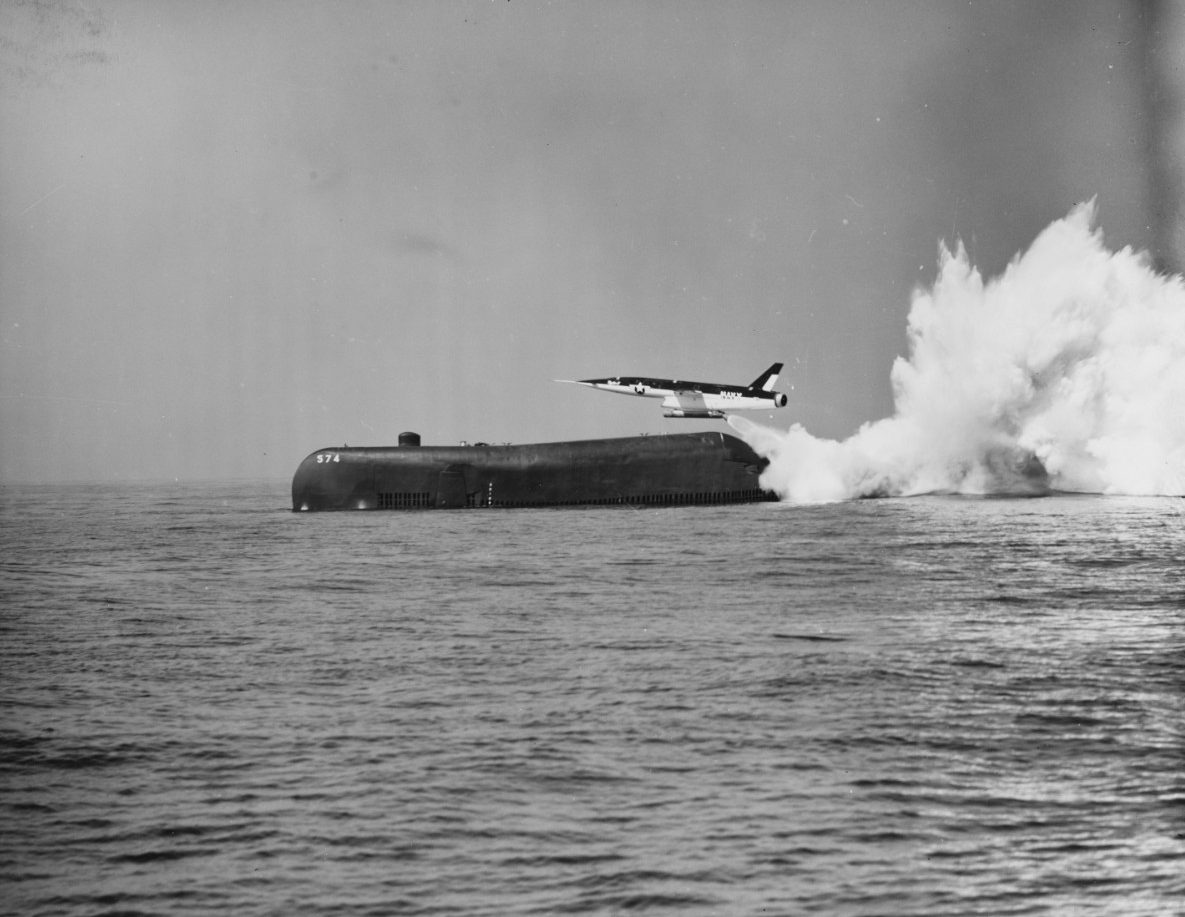Compiled by Brent Hunt, Naval History and Heritage Command’s Communication and Outreach Division
Winston S. Churchill Commissioned
On March 10, 2001, USS Winston S. Churchill (DDG-81) was commissioned at Naval Station Norfolk, Virginia. Janet L. Cohen, the ship’s sponsor and wife of then–Secretary of Defense William S. Cohen, commissioned the ship with Mary Soames, the daughter of former British Prime Minister Winston Churchill. It is the 31st Arleigh Burke–class destroyer to be built for the U.S. Navy and is capable of fighting air, surface, and subsurface battles simultaneously. The mission of Winston S. Churchill is to provide a forward naval presence and ensure the world’s oceans remain free and accessible to all. Uniquely, Winston S. Churchill is the only U.S. Navy vessel to have a foreign naval officer permanently assigned to the ship's company. The navigator is, and has been since the ship’s commissioning, a British Royal Navy officer. It is also the only U.S. naval vessel to fly a foreign ensign; the Royal Navy’s White Ensign is flown as well as the Stars and Stripes. It is the 5th U.S. warship to be named in honor of an Englishman and the 16th to be named after a foreign national—the only one in active service today.
After commissioning and a summer shakedown cruise off Florida, the ship steamed for Plymouth, England, in late August to welcome aboard a Royal Navy exchange officer, host distinguished visitors, conduct drills, and engage in joint exercises off the southern coast of England. The German destroyer FGS Lutjens (D-185) had also made port in Plymouth earlier for a few days of rest and recreation. While Winston Churchill was in port, the crews from both ships quickly became friends and played soccer together when time allowed. On the morning of Sept. 11, 2001, 19 terrorists from the militant Islamist group al-Qaeda hijacked four commercial aircraft and crashed two of them into the North and South Towers of the World Trade Center complex in New York City. A third plane crashed into the Pentagon in Arlington, Virginia. After learning about the other attacks, passengers on the fourth hijacked plane, Flight 93, fought back, and the plane crashed in an empty field in western Pennsylvania, about 20 minutes by air from Washington, DC. Nearly 3,000 people were killed from 93 different countries.
Both Winston S. Churchill and Lutjens were still in English waters at the time. On Sept. 14, as Lutjens was leaving England to return home, the ship’s captain asked permission to pull alongside Winston S. Churchill as they were getting underway. As the ship approached Winston S. Churchill, the entire crew of Lutjens was manning the rail. Among the German sailors standing on the superstructure, several were holding up a banner made from a bedsheet that read, “We Stand by You.” Above the banner, both an American and German flag were flying at half-mast side-by-side from the yardarms. The simple and quiet act of empathy from the German sailors spoke volumes as it was reported that there was not a dry eye aboard Winston S. Churchill as the Lutjens passed by. More important, the honor bestowed was a broad statement speaking to the U.S. Navy and America indicating Germany’s support of the United States. The makeshift banner is in the collections of Naval History and Heritage Command. It recently underwent restoration in 2021 for the 20th anniversary of the attacks.
In January 2003, Winston S. Churchill deployed in support of Operation Iraqi Freedom with the USS Theodore Roosevelt battle group, and during the deployment, it fired several Tomahawk missiles at military targets during the early stages of the war. After conducting operations in the region for about five months, the ship returned to Norfolk at the end of May 2003.
On Sept. 26, 2010, while South Korean guided missile destroyer Wan Geon (DDG-978) patrolled the Gulf of Aden for pirates as part of Combined Task Force 151, the ship discovered a skiff at approximately 7:30 a.m. The boat had lost power, had drifted, and appeared dangerously overloaded with 85 people—10 Somalis and 75 Ethiopians. Wan Geon passed the skiff’s position to the task force and Winston S. Churchill, operating nearby, was directed to the area. When Winston S. Churchill arrived, it lowered a team in a rigid-hull inflatable boat, and the Sailors boarded the skiff, providing food and water to the refugees. The American Sailors attempted to restart the boat’s engines, but soon discovered that they were inoperable, and the rigid inflatable boat took the derelict vessel in tow out of the busy maritime corridor and toward the Somali coast. Tragedy ensued at about 8:30 a.m. the following day when American Sailors transferred additional humanitarian supplies to the people, but many of them rushed to the side of the boat and their weight capsized the flimsy craft. Winston S. Churchill lowered an additional rigid-hull inflatable boat, and both teams scoured the water for survivors, supported by a Royal Australian Air Force Lockheed AP-3C Orion maritime patrol plane that diverted to their assistance. The destroyer rescued 61 survivors and returned them to Somalia.
Market Time Patrols Began
On March 11, 1965, Market Time patrols began to prevent North Vietnamese ships from supplying enemy forces in South Vietnam by sea. The Coastal Surveillance Force (Task Force 115) used a system of three barriers to patrol the South Vietnamese coast. Patrol aircraft covered the outermost barrier to identify, photograph, and report suspicious vessels, and U.S. Coast Guard cutters stopped and searched cargo vessels in the middle barrier 40 miles off the coast. The South Vietnamese navy, the Junk Force, and U.S. Navy patrol craft, fast swift boats cruised the coastal waters of the inner barriers. By 1968, these forces stopped virtually all seaborne infiltration from North Vietnam to South Vietnam. The blockade forced the North Vietnamese to rely on the Ho Chi Minh Trail and the Cambodian port of Sihanoukville to transport supplies to the Viet Cong.
When the 1954 Geneva Accords divided Vietnam into South and North, it provided an opportunity that gave Communist leader Ho Chi Minh's supporters an edge—a period of free movement between the divided country. With thousands of his supporters left in the South, Ho Chi Minh recruited thousands more to bring to the North and train for later operations. As a result, the Communist-led National Liberation Front had a ready army of Viet Cong in the heavily infiltrated provinces along the Mekong Delta. Since the South Vietnamese army and navy were outnumbered, they rarely patrolled the rivers and coastline to stop the movement of supplies to the Viet Cong. When the United States entered the war, the U.S. Navy patrolled mostly in the deeper waters, with helicopters and patrol planes providing surveillance for American and Vietnamese ground troops.
On Feb. 16, 1965, Army Huey pilot 1st Lt. James Bowers was flying over the South China Sea near the South Vietnamese coastal village of Vung Ro when he saw something that didn't look quite right. An island seemed to be moving. As he descended for closer inspection, the island fired back. It was a trawler covered with plants around its frame and deck, filled with a boatload of weapons and ammunition headed toward the Viet Cong. After the disguised trawler was captured, the U.S. Military Assistance Command Vietnam decided to put an end to the Viet Cong supply route.
Operation Market Time was named as a reference to commercial and marketing ships that would ultimately fall under South Vietnamese and American jurisdiction. All vessels were suspect. When they weren't stopping, boarding, and inspecting ships that ranged from trawlers to fishing boats, the crews provided naval gunfire support for troops on shore, transported troops, evacuated civilians, and provided medical outreach to the local communities. The squadrons used a variety of boats and ships, from destroyers and minesweepers that patrolled in deeper water to shallow water vessels like fast patrol craft, Coast Guard cutters, gunboats, and even air-cushioned patrol vehicles. More backup came from observation aircraft such as P-2 Neptunes and P-3 Orions. The area of responsibility stretched across approximately 1,200 miles of coastline from Da Nang in the north to Phu Quoc Island in the south, and 40 miles out to international waters.
The success of Market Time forced the North Vietnamese to find other ways of supplying the Viet Cong. After the Tet Offensive in January 1968, when the Viet Cong executed a series of attacks throughout South Vietnam, Ho Chi Minh was desperate to replenish his troops in the South, and so he looked again toward the fastest route of delivering supplies. During the evening of Feb. 29, 1968, four separate attempts were made by Communist ships to slip through the blockades. The battle began south of Da Nang as a 100-foot-long trawler ignored warning shots by Coast Guard cutter Androscoggin. The trawler returned fire and the battle began, with the cutter joined by two other cutters and helicopter gunships. Trapped, the trawler’s captain headed for shore, beaching the ship. At 2:35 a.m., the trawler exploded. A second battle was fought at nearly the same time, off the Ca Mau Peninsula, when another enemy trawler tried to breach the inner barrier. Four cutters came to attack, supported by Navy swift boats. Overwhelmed with U.S. gunfire, the trawler burst into flames and exploded. Northeast of Nha Trang, another trawler was caught in the inner barrier by a force of swift boats, Vietnamese junks, Vietnamese navy vessels, Fleet Command ships, and an AC-47 aircraft. The trawler’s captain ran the ship onto the beach, destroying it. The captain of a fourth trawler decided to cut his losses and returned back to North Vietnamese waters after Coast Guard cutter Minnetonka intercepted it in international waters near the border. After the night of four engagements and failed missions, the North Vietnamese never made another such maneuver to resupply their troops by sea. The success of Market Time interdiction operations was considered one of the great successes of the Vietnam War.
The Heroism of Francis J. Pierce
On March 15–16, 1945, during the Battle of Iwo Jima, Pharmacist’s Mate First Class Francis J. Pierce repeatedly exposed himself to enemy fire to protect Marines under his care while attached to 2nd Battalion, 24th Marines, 4th Marine Division. While caught in heavy enemy machine-gun fire that wounded multiple Marines, Pierce quickly took charge, carried the wounded to safety, and rendered first aid. After directing the evacuation of three casualties, he stood in the open with his weapon blasting to draw enemy fire, enabling the litter bearers to reach cover. Turning his attention to others, Pierce attempted to stop the severe bleeding of a casualty when a Japanese soldier fired at him from less than 20 yards away, wounding his patient. Pierce proceeded to kill the enemy with the last of his ammunition. He then lifted the patient on his back and staggered some 200 feet, bringing him to safety. Despite extreme exhaustion, he backtracked across the same terrain and rescued another fallen Marine. The following morning, he led a combat patrol to a sniper’s nest and, while providing aid to a stricken Marine, was seriously wounded. Pierce received the Medal of Honor for his extraordinary valor and heroism.
Born on Dec. 7, 1924, Pierce, a farm boy from Earlville, Iowa, enlisted in the U.S. Navy at the age of 17 on Dec. 14, 1941, at Naval Recruiting Station Great Lakes, Illinois. He completed recruit training at Great Lakes and Hospital Corps School at Portsmouth, Virginia. He served at Naval Hospital Parris Island, South Carolina, until August 1942, then transferred to the Training Center, Fleet Marine Force, at Camp Lejeune, North Carolina. In January 1944, he was transferred to the 4th Marine Division at Camp Pendleton, California.
During World War II, Pierce took part in the landing on Roi-Namur, an island in the northern part of Kwajalein Atoll in the Marshall Islands, Feb. 1–7, 1944. During the fight, he learned the grim realities of war, causing him to reject the code that corpsmen be unarmed. He procured a Thompson submachine gun (Tommy Gun) and used it so effectively that the Marines nicknamed him the “Angel with a Tommy Gun.” Pierce remained continuously in combat from that time onward, serving in the Marianas’ campaigns of Saipan and Tinian. During the Battle of Iwo Jima in early 1945, Pierce became an expert on the terrain and disposition of enemy troops, serving continuously for four weeks without relief. He was originally awarded the Navy Cross and Silver Star for his actions on Iwo Jima; however, after he was honorably discharged from the Navy, the previous awards were cancelled, and Pierce was informed he would receive the Medal of Honor. He was presented the nation’s highest honor during a ceremony hosted by President Harry S. Truman at the White House on June 25, 1948.
As a civilian, Pierce was employed as a Michigan State police officer. He retired from the police force in 1982. Four years later, on Dec. 21, 1986, he died of cancer. He is buried in the Holy Cross Cemetery, Grand Rapids, Michigan.
Today in Naval History
On March 7, 1958, USS Grayback (SSG-574) was commissioned at Mare Island Navy Yard in Vallejo, California. It was the first submarine built from the keel up with the guided-missile capability to fire the Regulus II sea-to-surface missile. While operating out of Port Hueneme, California, in September 1958, it carried out the first successful launching of the missile from a submarine, which pointed the way to a revolutionary advance in the power to attack land bases. The Regulus II, equipped to carry a nuclear warhead, was the supersonic successor to the Regulus I missile. It had greater range, accuracy, and better resistance to countermeasures than the earlier version. Although the Regulus II was considered at the time state-of-the-art, the program was short lived. Production of the missile was cancelled later that year in favor of the Polaris missile, which gave unprecedented accuracy as well as allowed the submarine to be submerged when the Polaris was launched.
Grayback, which represented a new class of guided missile submarines, was designated as an attack submarine when it was commissioned but was converted to guided missile submarine later that year. In May 1964, when the Regulus program officially ended, Grayback was decommissioned. Grayback returned to service a few years later as an amphibious transport submarine after its missile hangars were converted into space for more than 60 troops, several SEAL (Sea, Air, Land) swimmer delivery vehicles, and a decompression chamber. Grayback would conduct special operations missions until it was eventually decommissioned and sunk as a target for a training exercise in the South China Sea on April, 13, 1986. For more on strategic deterrence, visit NHHC’s website.

